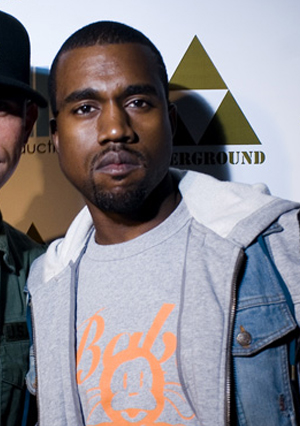Online News Sites Diss Diversity

Coverage of African Americans is generally limited to coverage of celebrities, like Kanye West (pictured).
The Web is supposed to be different. More open, more inclusive. Surely old ways of reporting on (or ignoring) people of color haven’t transferred online ...
That’s what longtime journalist Jean Marie Brown thought when she embarked on a yearlong study in March to evaluate how mainstream online media cover minorities. But after just a few months of screening content, Brown found that mainstream online media portray people of color no better than legacy institutions do.
Brown wrote about her study for Nieman Reports:
The Web is supposed to be different, right? Space is unlimited. The ability to aggregate copy gets around staffing concerns. The institutionalized habits (and excuses) that hamstrung the legacy newsrooms aren't part of online culture. Couple this with the notion that we're said to be living in a post-racial society and the result should be rich, vibrant reporting that represents the life experiences of all Americans. It should not be coverage that is stratified by class, race, geography, generation and gender.
But “supposed to” doesn’t make it so, as Brown discovered during her survey. Brown, whose research is supported by the Robert C. Maynard Institute for Journalism Education, has been examining the homepages of eight news websites every weekday since March to assess their content.
Brown chose the Huffington Post, the Daily Beast, Slate and Salon to represent mainstream online media. She chose the Root, theGrio, Loop21 and MarioWire to represent “minority online media outlets” — outlets that primarily serve specific communities of color.
She writes:
I can confirm that mainstream online media are caught in the same loop that ensnared legacy outlets. Their view of minorities is limited, and that in turn hinders their ability to broaden their coverage. The parallels between the legacies and online media are as stark as they are disheartening. Rather than fostering understanding that might help us find common ground, mainstream online media maintain the divisive "us vs. them" mentality that is evident in many of our contemporary conversations about race.
Brown found that mainstream online media generally silos coverage of Latinos into stories about immigration, while profiles of A-list celebrities, people of influence or athletes dominate coverage of African Americans. “Coverage of the crimes and misdemeanors of sports figures so dominates this space that it's clichéd,” Brown wrote.
And yet why would it be any different? The online news media are simply mirroring traditional media outlets, where diversity — both in news coverage and in the newsroom — remains limited. According to the 2010 U.S. Census Bureau report, minorities comprise 36 percent of our population. Yet people of color still own only a small sliver of radio and television stations across the nation. And networks feature a small number of programs by and for people of color.
Brown did find that the minority online media outlets she surveyed are providing hard-hitting, dynamic and rich content for their multicultural audiences. She says the absence of these voices from the mainstream conversation makes our national dialogue “hollow.”
Brown's study is only halfway done. Online media has a chance to write a new legacy, shake off the traditions of the past and prove Brown wrong. Or in this case, right: that the Web is different.
Photo via (cc) Flickr user darkroom demon